Tong Chee Hwee may not be a household name, but the restaurants at which he is executive chef certainly are. As head chef of Hakkasan in Hanway Place he transformed London’s perception of Chinese cuisine, gaining a Michelin star in 2003, which it has held ever since. Hakkasan is now a global brand, with restaurants stretching from Mayfair to Miami and Mumbai, and since 2010 Mr Tong has been the overall top chef in the group. He is in personal charge of HKK, the latest venture of Hakkasan, which is intended as a showcase for the best food the group can produce, in a tasting menu format only. Mr Tong cooked at the Ritz Carlton in Singapore before moving to London in 2001 to head up the kitchens of Hakkasan, which at that time was owned by Alan Yau. Mr Yau subsequently sold his creation to the Abu Dhabi investment company Tasameem, which has bankrolled the global expansion. The same group own Yauatcha and Chrysan, and operate Sake No Hana in London.
HKK opened in December 2012, situated a few minutes walk from Liverpool Street in what was a fairly run-down area of warehouses, now gradually being regenerated. HKK seats 48, with a further private dining room for 10 available. The showcase metaphor is literal here, with the kitchen operations partially visible from the dining room. The room itself, carpeted with a low ceiling, has a rather corporate office feel to it. Tables are, however, well-spaced and adorned with crisp white linen; there is a central area as a focal point where some dishes have the finishing touches applied.
The fifteen course tasting menu was priced at £95, with a shorter eight-course version available at lunch at £48. The wine list had around 120 choices, ranging in price from £39 to £4,074, with a median price of £75, but with just a dozen choices under £40. Mark-ups average 3.1 times retail price, which is far from kind, though not the worst in London. The wines come from all around the world, including wines from Slovenia and Greece, and feature some excellent growers. Example wines were Le Cigare Blanc "Beeswax Vineyard", Bonny Doon 2009 at £66 for a wine that you can find in the high street for £21, Shiraz "The Dead Arm" d'Arenberg 2007 at £97 for a wine that retails at £39, and Pouilly-Fumé "Pur Sang" Didier Dagueneau 2010 at £155 for a wine that will set you back £59 in the shops. Mark-ups are little kinder as you climb the list e.g. Sassicaia Tenuta San Guido 1999 was £405 compared to a shop price of £158.
A second visit confirmed the very high standards that I encountered my first time here. This evening I tried some dishes from the vegetarian set menu. Some unlikely-sounding ingredient combinations worked well e.g. warm luffa melon with aubergine and chilli. A “vegetarian chicken” (tofu) with black pepper sauce baked in a red onion was superb, the texture of the tofu resembling chicken, and the sauce beautifully judged. The duck seemed to me even better tonight than on my first visit, the skin particularly delicate.
Even desserts, usually a weakness of Chinese cuisine, were good: lychee tapioca with passion fruit ciboust and jam was refreshing, while pineapple fritter with salted lime jelly and vanilla ice cream was also excellent. Service was terrific, and in a conversation with our waiter it transpires that the waiting staff at HKK go on a two-week training course before being let out in the dining room, a rare level of staff training that shows in the silky smooth service that complements the refined cuisine at HKK.
The notes below are from my first visit in December 2012.
To begin with, “four treasure Iberico ham wrap” consisted of Iberico ham wrapped around home-made tofu, yam, preserved Szechuan vegetable and golden organic nameko mushroom, served with a goji berry (wolfberry) sauce and finished with toasted pine nuts and micro mint. This was pleasant but unspectacular, the ham certainly of high quality but the vegetable filling seemed to me to have rather over-subdued flavour (perhaps 15/20).
The same subtlety of flavour could be found to better effect in the next nibble of drunken chicken, and again the use of high quality ingredients was apparent. Poulet de Bresse chicken from the Rhone valley was marinated in 20yrs vintage Gu-yue-long-shan rice wine and served with jellyfish, finished with goji berry and coriander. The rice wine worked quite nicely and did not overwhelm the chicken, which had the complex flavour that Bresse chicken is famous for (16/20).
Next was Peking duck, roasted for 1 hour and 20 minutes with cherry wood. This iconic dish is usually disappointing in London, even at the smarter restaurants. However in Beijing it is taken to a remarkably high level by restaurants such as Da Dong, Duck de Chine and Made in China. One key measure of quality is the crispy skin, served as is traditional with crystallised white sugar and home-made duck sauce. Although this did not approach the meltingly delicate version that I enjoyed so much at Made in China, it was nonetheless very good indeed, and was better than any version that I have eaten in London. The duck itself (the bird in this case came from Scotland) was served with a little salad, and also in a sesame pancake roll wrapped with slice of duck, cucumber and spring onion. The quality of the meat was excellent, though I have eaten more delicate pancakes elsewhere (still comfortably 16/20). In some Beijing restaurants the duck is followed by a soup made from the bones of the bird, but HKK went a different way. Next at this meal was a soup of Poulet de Bresse and dried scallop, a garnish placed on a separate spoon for the diner to infuse into the soup at the table. The garnish comprised dried scallop, goji berry, Japanese chrysanthemum flower and Chinese squash. This was certainly very delicate, though I wonder whether a duck soup would have worked even better (15/20).
This was followed by a trio of dim sum. Steamed truffle har-gau was a slight refinement on the traditional version, using truffle sauce to supplement the prawn and bamboo shoot. The dumpling was superbly delicate, the prawn beautifully cooked. Pan-fried Szechuan dumpling contained Australian tiger prawn, chicken and nameko mushroom and had an enjoyable, robust spiciness. Finally a contrast of a sour flavor was provided by a meltingly delicate mooli (Chinese radish) puff. These dim sum were exquisite, simply the best I have tasted anywhere (18/20).
Next was gai lan, crunchy Chinese broccoli served with shimiji mushroom and lily bulb (a relative of onion) finished with home-made spicy XO seafood sauce. I am great fan of gai lan and have eaten it many times, but the shoots here were supremely delicate and the sauce was extremely well-judged, lifting the flavor but not overwhelming the broccoli. It is one thing to take a luxury ingredient and make it taste good, but it takes serious skill to make broccoli taste magnificent, as it did here (18/20).
Next was wok-fried Scottish lobster, served with spicy yellow bean sauce and braised pan-mee, a Chinese egg noodle. The lobster was extremely tender, the bean sauce superb, the noodles delicate (18/20). This was followed by a dish intended to cleanse the palate prior to the main courses to follow. Osmanthus jelly was served with a water chestnut cake and garnished with Chinese apple blossom, offered with Da-hong-pao tea, a rare tea from a mountainous are in Fujian region in south-east China. The water chestnut cake was extremely delicate, the jelly quite refreshing (16/20).
This was followed by fillet of monkfish served with a Louis Roederer and rice wine sauce, finished with sun dried tomatoes and deep fried Thai spring onion. The monkfish tail was beautifully cooked and would have graced any top French restaurant, but the rice wine and champagne sauce gave a distinctive Chinese slant to the dish, and complemented the fish very well (18/20). A ceramic dish (toban) was now used to serve homemade pumpkin tofu with a brunoise of chicken, yam in Guilin and Zhuhou sauce giving a sweet and sour flavour and finished with dried katshubushu flakes (dried tuna). I am not usually a big fan of tofu but this was a breed apart, beautifully silky in texture, the bold sweet and sour flavours in careful balance (18/20).
Next was wagyu beef from Australia, braised for two and a half hours and then smoked with jasmine tea. The cut used was short rib, which has enough flavour to avoid being too buttery (I find some with more delicate cuts of wagyu can be so marbled that you almost forget you are eating beef), served with water chestnuts, a sweet potato crisp and finished with deep fried white peony tea leaves. This was very good indeed, the potato providing a welcome textural contrast to the beef, and the water chestnuts were of impressive quality (17/20). The last savoury dish was steamed razor clam served on vermicelli rice noodle, garnished with chopped ginger, garlic, coriander and chilli and finished with a glutinous rice ball flavoured with morel mushrooms. The razor clam avoided any hint of rubberiness and the rice really did taste of morels (16/20).
There were two desserts. To my taste, Chinese desserts do not compete well with top French ones, though it was interesting to see what would appear now. Lychee tapioca was served with passion fruit chiboust, passion fruit jam and fresh passion fruit, and what tasted like coconut milk. This was certainly pleasant, though hard to get really excited about; however the passion fruit flavour came through well (15/20). Pineapple fritter was wrapped in kadafi pastry, served with a quenelle of vanilla ice-cream, salted lime jelly, fresh lime, finished with a poppy seed wafer and dressed with the consommé of the poaching liqueur from the pineapple. This was quite elaborate, though the vanilla ice cream itself could have had lighter texture and deeper vanilla flavor (15/20). Finally there was a selection of petit fours. A pumpkin and ginger macaroon was not as light in texture as a top French one would be, though a crisp five spice financier with caramelized white chocolate was good, whilst a Szechuan black pepper truffle was very restrained in the use of pepper. An ice mochi had durian fruit inside, a fruit with a very distinctive smell; it is an acquired taste that I have never acquired.
Service was extremely slick and well-drilled, as it always seems to be the case at Hakkasan restaurants. The dishes came at a steady pace and topping up of drinks was faultless. The meal was £95, and with water, jasmine tea and some coffee to finish the total came to £124 a head including service. This was a remarkable meal. It started a little slowly, and the desserts were pleasant rather than thrilling, but the savoury dishes in the middle of the meal featured some extremely high quality cooking indeed. Ingredients were top notch, as could be seen from the poulet Bresse and also the exceptionally good vegetables. Cooking technique was impressive, with for example the beautifully cooked lobster and monkfish, and the balance of the dishes was excellent. I have eaten at a lot of restaurants in China, and only at one (Made in China in Beijing) have I eaten fractionally better Chinese dishes. HKK is now not only clearly the best Chinese restaurant in London, but based on this meal it is one of the very best in the world.
Further reviews: 18th Apr 2015 | 03rd Nov 2014






















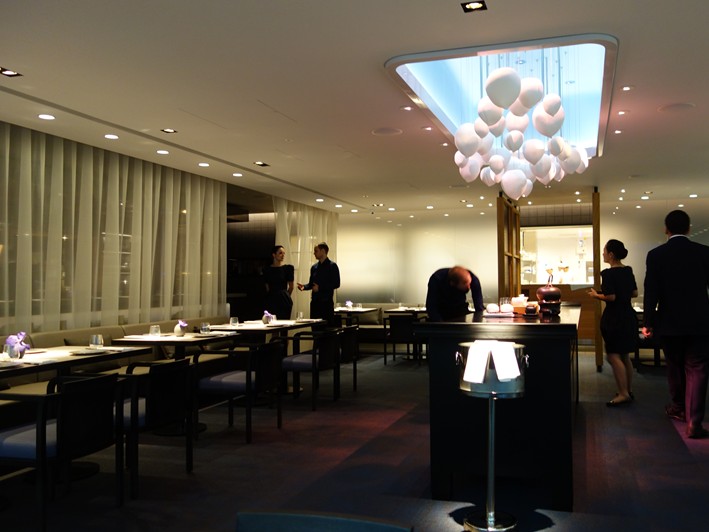


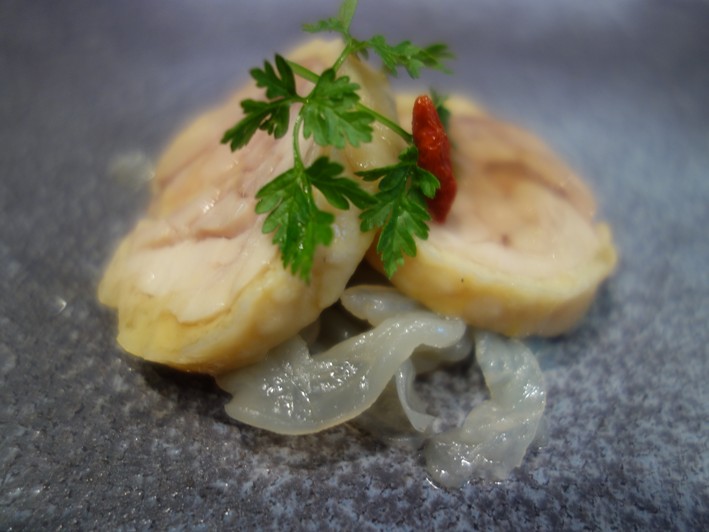
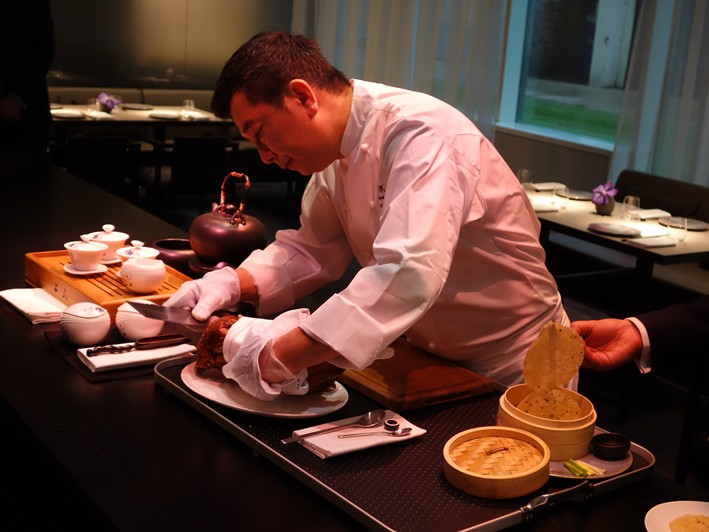
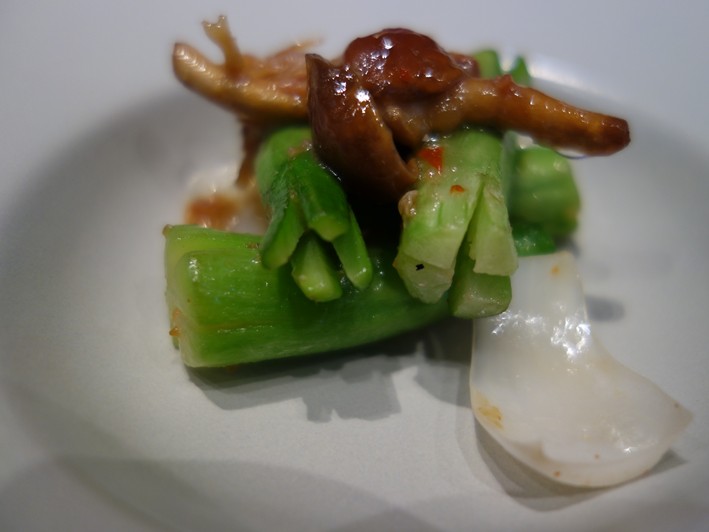

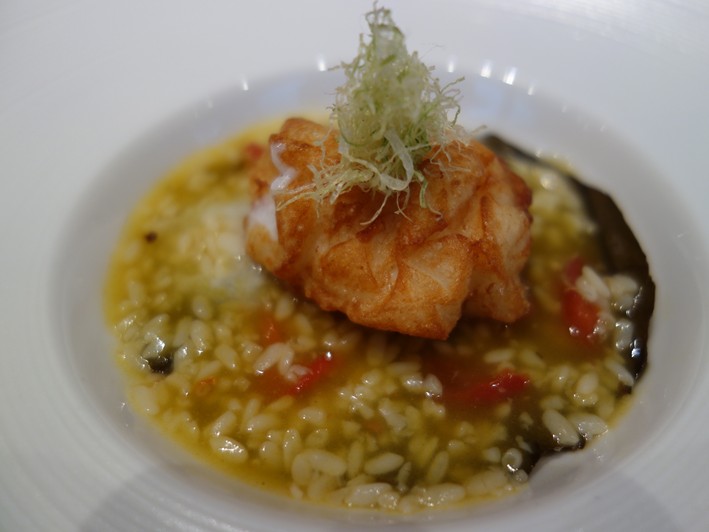
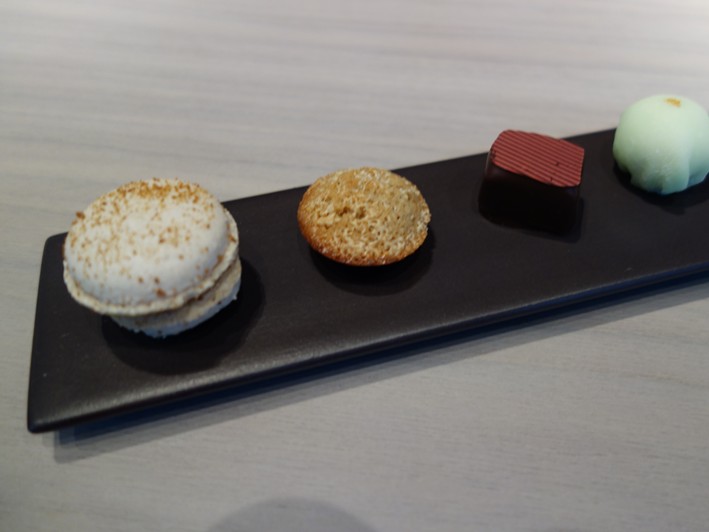
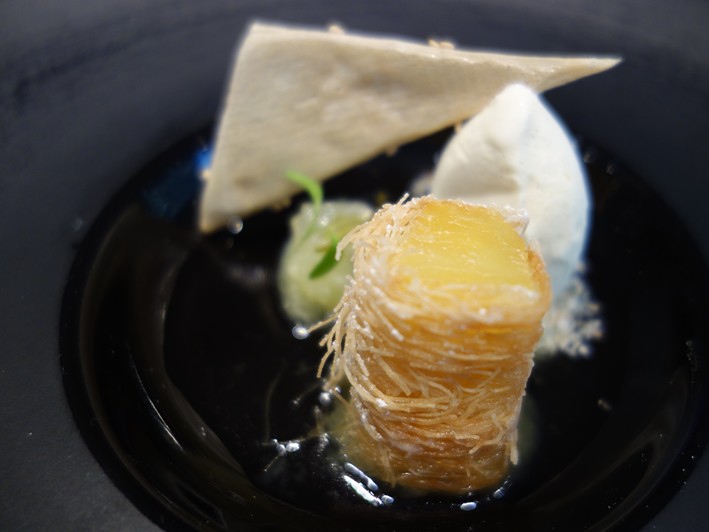
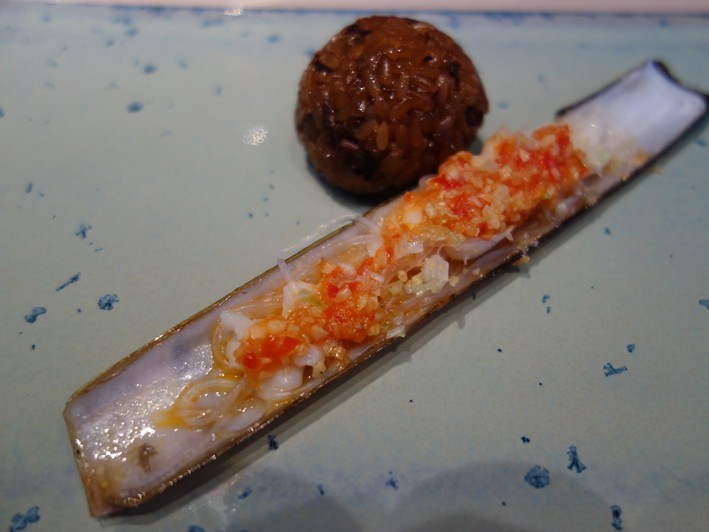
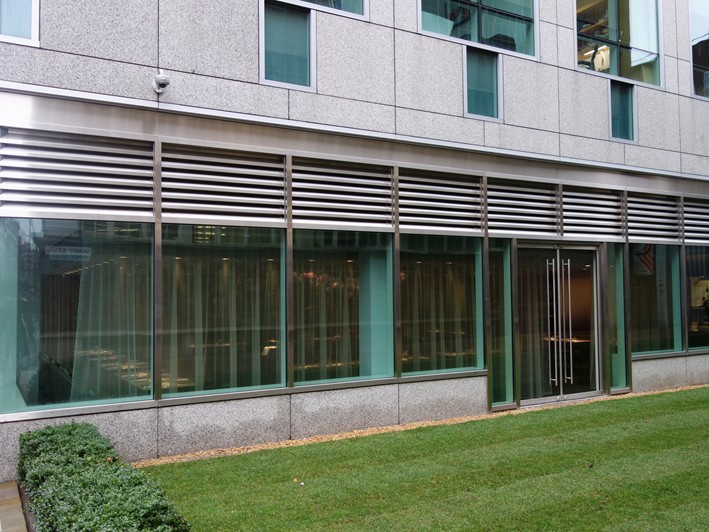
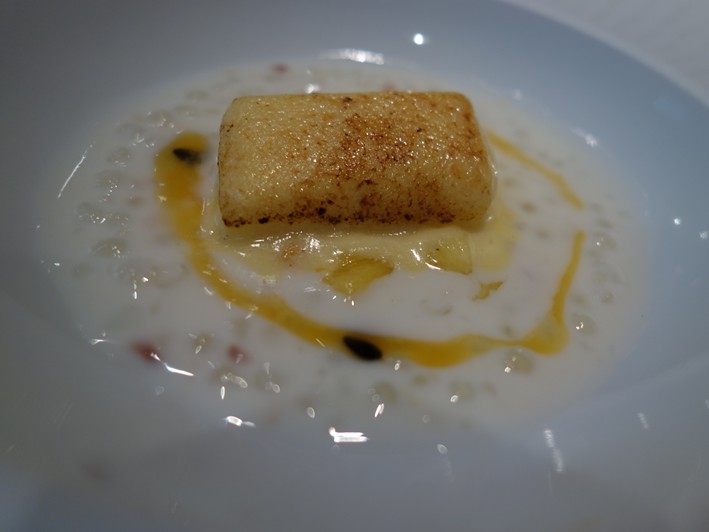

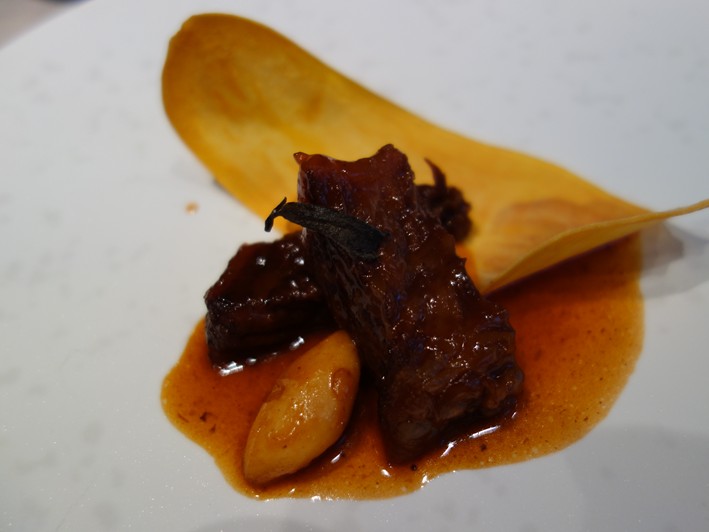
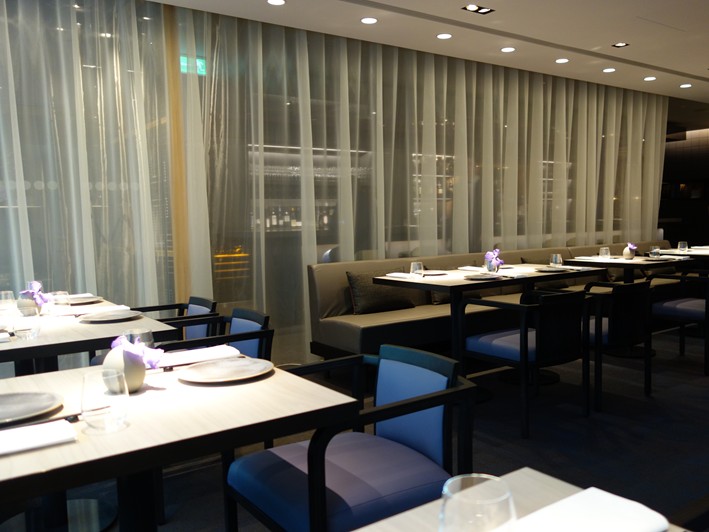
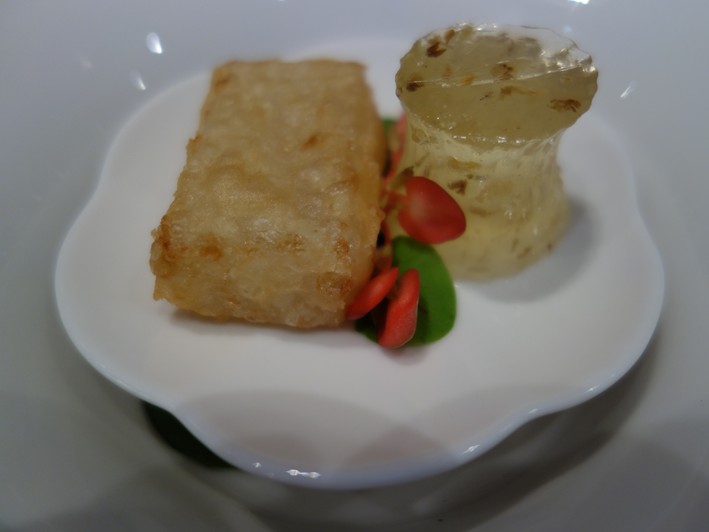

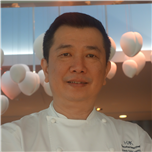
Add a comment
Thank you for submitting your comment, this will be checked and added to the website very soon.
User comments